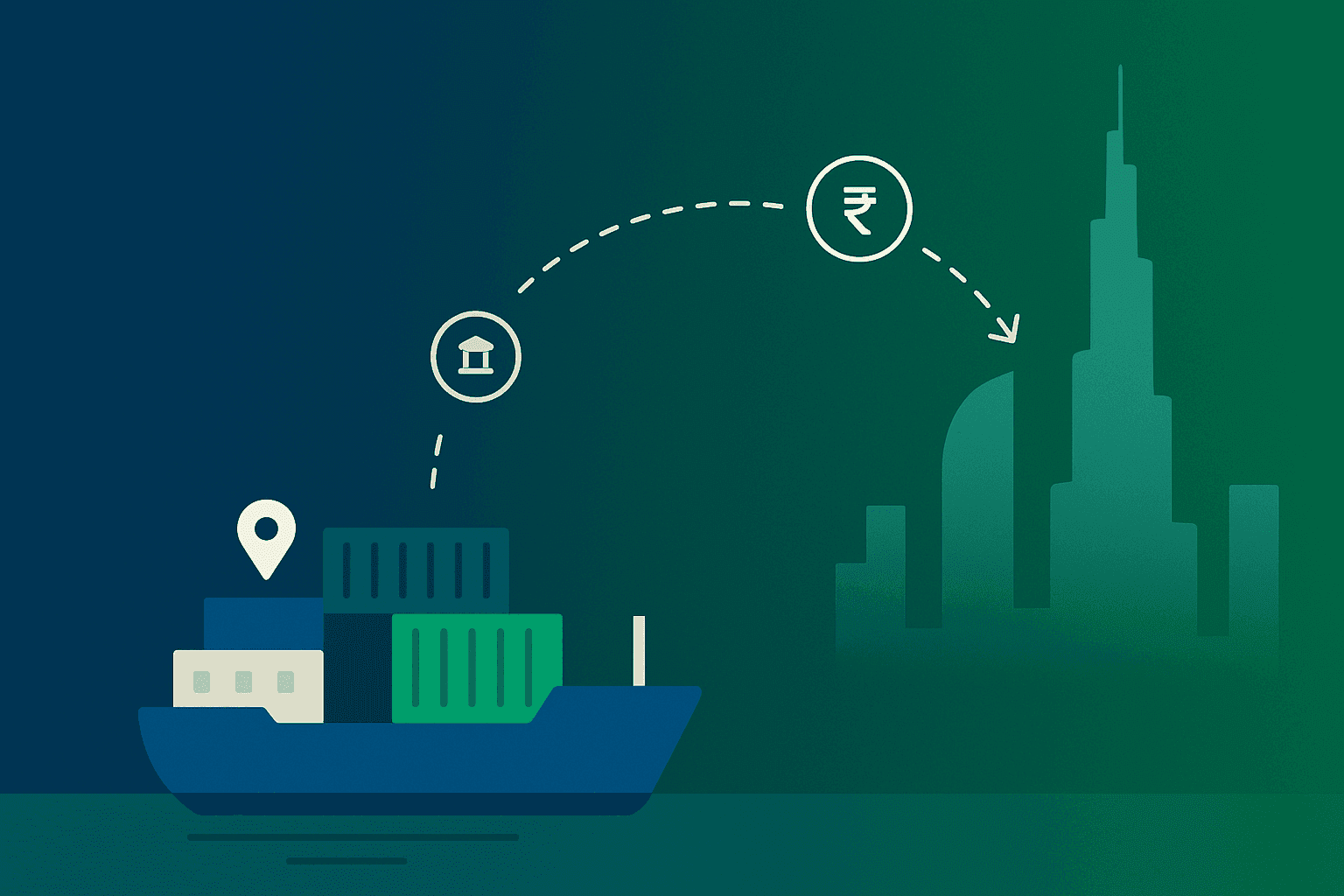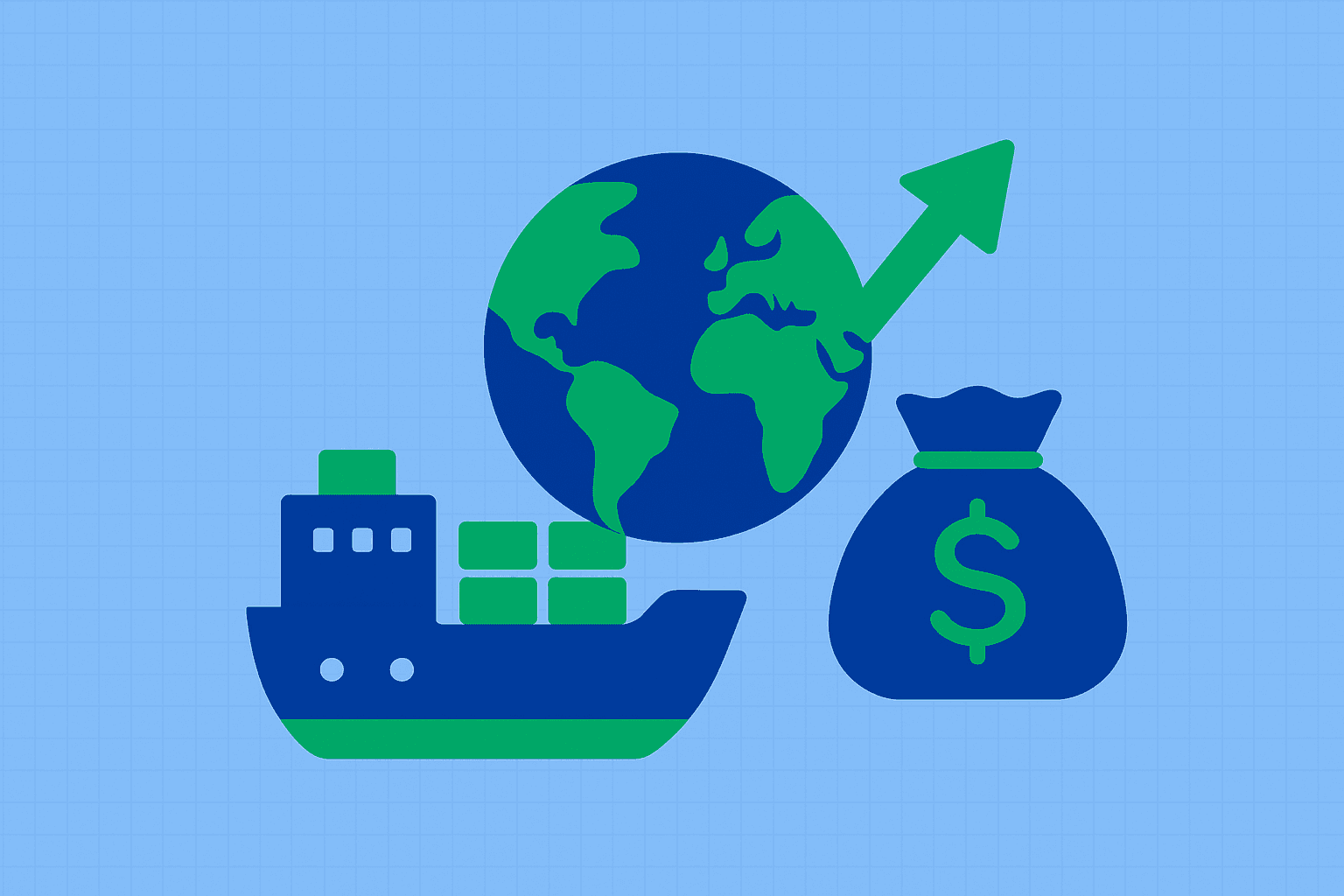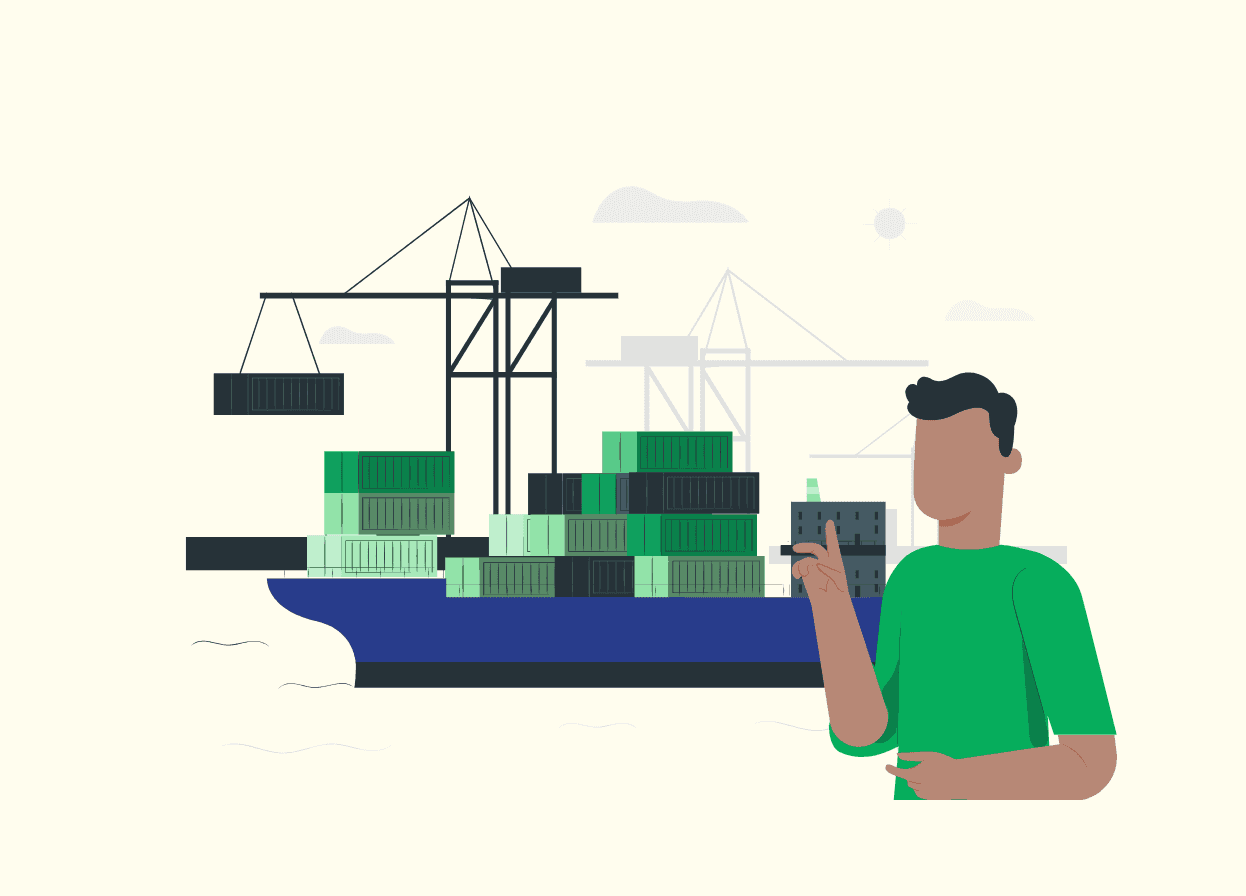How to Find Buyers for Export from India: Top Tips

Updated on: 28th November 2025
TL;DR.
- Biggest unlock: stop “spray & pray” outreach—use data + govt buyer databases + buyer-seller meets to reach importers already sourcing your category.
- Use Trade Connect ePlatform (Buyer Connect) to find potential buyers by product/HS code.
- Monitor Indian Trade Portal for buyer requirements and BSM registrations.
- Attend FIEO-led Reverse Buyer-Seller Meets (RBSMs)—they’re designed for direct exporter↔buyer meetings (RAMP/RBSM examples are published as events).
- New: Use the Govt’s TIA portal (launched Nov 2025) to shortlist markets using trade data before you spend time/mone
Indian exports are booming, USD 437 billion in 2023-24. But finding international buyers is still the hard part.
This surge is getting more manufacturers and businesses excited about looking beyond our domestic borders. The government is pushing exports hard; the numbers show it's working. But here's the thing - finding overseas buyers is still an uphill climb, especially for newcomers.
We've been researching this space and talking to actual exporters who've made it work. In this guide, we'll share some lesser-talked-about ways to find buyers for your exports from India, whether you're just starting out or looking to expand your existing business.
Strategies for New Exporters and Businesses to Find Buyers for Goods Exports from India
Finding international buyers is challenging for Indian exporters, especially when starting out. The main issue isn't product quality but building trust and credibility with overseas buyers who don't know you. Most exporters make the mistake of cold emailing random companies or posting on generic B2B platforms, which rarely works. You need smarter, targeted approaches.
Register with FIEO and Your Industry EPC
Start by getting a membership with FIEO (Federation of Indian Export Organisations), which connects you to a network of over 200,000+ Indian exporters. You’ll gain access to buyer-seller meets where vetted global importers come specifically looking for suppliers.
- Download the Niryat Mitra app and complete your profile. It’s used by international buyers to search for Indian exporters by product category.
- Next, identify and join your sector’s Export Promotion Council (EPC), whether it's textiles, engineering, or handicrafts.
These councils regularly host targeted trade events where you'll meet buyers already interested in your product category, making your outreach focused and meaningful.
Use government portals smartly
- Check the Indian Trade Portal every week for live buyer inquiries - foreign companies post specific sourcing requirements that you can respond to directly.
- Register on DGFT's Trade Connect e-Platform to get real-time market reports for your target countries. Connect with commercial officers at Indian embassies who maintain local importer databases. Set up alerts for your product categories to be notified when new opportunities are posted.
Attend introductory events (even the small ones)
Apply for the MAI scheme funding to attend these government-sponsored events where pre-qualified buyers come looking for suppliers:
- Buyer-Seller Meets (BSMs) - Direct meetings with vetted international importers
- India International Trade Fair - Meet visiting foreign buyers on home turf
- IHGF Handicrafts Fair - Asia's largest handicrafts sourcing event
- Reverse BSMs - Foreign buyers flown to India specifically to source products
Research attendee lists beforehand and book meetings in advance. Smaller events often give you more face time with serious buyers.
List on niche domestic platforms
Optimise your profiles on these platforms where international buyers actively search for Indian suppliers:
- TradeIndia & IndiaMART - Strong presence from US/UK/Middle East buyers
- APEDA portal - For agricultural products and food exporters
- Gem & Jewellery EPC listings - For gems and jewelry exporters
- Fibre2Fashion - For textile and apparel exporters
- Engineering goods portals - Through EEPC India
Include HS codes, certifications, and export experience in your listings. Respond to inquiries within 6 hours - speed matters to international buyers.
Check website age and government certifications before engaging
Before engaging with any potential buyer, always check how long their website has been active - it tells you how established they are in business. Also, ask for their government certificates and approvals upfront.
This simple verification step helps you avoid time-wasters and scammers who, unfortunately, target new exporters looking to make their first international sale.
Strategies for Experienced Service SMEs to Find Buyers for Goods Exports from India
Once you've got our export operations up and running, it's time to get smarter and more strategic. The methods that worked when you were starting out need to evolve into data-driven, professional approaches that can scale our business significantly.
Master data-driven targeting with trade databases
Instead of shooting in the dark, let's use actual trade data to identify hot prospects. UN Comtrade and ITC Trade Map are goldmines showing which countries and companies import your product.
For instance, if you export garments, you can see that US textile and apparel imports from India hit $10.8 billion in 2024. But here's the smart part - these databases also reveal which specific companies are importing.
Use Trade Map's company database feature to find actual importer names and contact details. You can filter by country, product category, and import volumes to identify companies that are already buying what you sell, just from other suppliers. This beats cold emailing random companies by miles because you're approaching buyers who have proven demand and budget.
The Govt launched a Trade Intelligence & Analytics (TIA) portal on 18 Nov 2025 to make trade data easier for exporters/MSMEs to use for market discovery and decision-making. Use it to spot countries where demand for your HS code is rising, and shortlist markets before you spend on outreach/travel.”
💡Pro tip: Look for an overseas market where India's share is small but growing, indicating untapped potential for positioning yourself as an alternative supplier. For example, Japan traditionally sources textiles heavily from China and Vietnam, creating opportunities for Indian exporters to position themselves as alternative suppliers.
Use buying agents and commission-based partnerships
Here's something that actually works based on real exporters' experience: Instead of chasing every buyer yourself, let local buying agents do the heavy lifting. A successful garment exporter mentioned buying offices that take 3-5% commission but handle all the relationship building, saving massive travel and networking costs.
These agents already have established relationships with importers in specific regions. They understand local market preferences, handle negotiations in the buyer's time zone, and can provide market intelligence you'd never get on your own. Look for buying agents through industry directories, trade fairs, or LinkedIn searches for "[your product] buying agent [target country]."
The key is finding agents who specialise in your product category and have a proven track record. Ask for references from other Indian suppliers they represent, and start with non-exclusive agreements until they prove their worth.
Deploy advanced LinkedIn Sales Navigator techniques
Basic LinkedIn isn't enough anymore. LinkedIn Sales Navigator gives you surgical precision in finding procurement managers abroad.
Use Boolean search strings like: "(Procurement OR Sourcing OR "Import Manager") AND (textiles OR apparel) NOT (assistant OR intern)" to find decision-makers in your industry.
The "connections of" filter on Sales Navigator helps you see who your existing clients are connected to in a particular industry. These warm connections are 10x more likely to respond than cold outreach because you have a mutual connection.
Export your leads using tools like Evaboot or Prospeo (which can find email addresses for up to 45% of LinkedIn profiles). Create targeted email sequences through your CRM, mentioning the mutual connection and being specific about why you're reaching out.
Remember geographic targeting, time your messages to land in their inbox during their business hours and use terminology they understand (American English for US buyers, British English for UK buyers).
Partner with complementary businesses for larger opportunities
Instead of competing alone, team up with other Indian exporters to bid for large contracts that no single company can handle. This is especially effective for government tenders or large corporate contracts where buyers need huge volumes or multiple product categories.
Create formal consortia with complementary businesses. Partner with accessory manufacturers, packaging companies, or logistics providers if you export textiles. This lets you offer complete solutions rather than just products, which buyers increasingly prefer.
Document these partnerships properly and present them professionally in your pitches. Large buyers love dealing with consortia because it reduces their vendor management overhead while ensuring consistent supply.
What are The Modern Digital Discovery Channels to find Overseas Clients for your Goods Exports?
Digital discovery has completely changed the game for exporters. You are no longer limited to trade fairs and cold calls - now you can identify, conduct market research, and connect with international buyers from our desks.
But here's the thing: everyone's doing "digital outreach" now, so you need to be smarter about it.
Master LinkedIn beyond basic connections
Apart from leveraging the LinkedIn Sales Navigator features, you can also do the following on this platform:
- Join the right groups, not random ones. Focus on industry-specific groups like "Global Apparel Buyers," "International Food Importers Network," or "Electronics Sourcing Industry Professionals." Don't just lurk - add value by sharing international market insights, answering questions, or posting about industry trends. One successful textile exporter mentioned they got their biggest US client through a LinkedIn group discussion about sustainable fabric sourcing.
- Build a content strategy that works: Share behind-the-scenes content of your manufacturing process, quality certifications you've achieved, or case studies of successful international shipments. Visual content performs 3x better than text-only posts on LinkedIn. A short video tour of your facility or showing your product being made can build tremendous trust with overseas buyers.
Strategic B2B marketplace positioning
- Everyone lists on Alibaba.com, but most do it wrong. Your Alibaba storefront needs to look like a serious business, not a hobby. Use professional photos, detailed product specifications with international standards (ISO, CE, FDA certifications), and respond to inquiries within 6 hours - buyers expect speed.
- Go beyond the obvious platforms. IndiaMART and TradeIndia attract serious international buyers, especially from the US, the UK, and the Middle East. However, niche platforms like Fibre2Fashion for textiles, GlobalSources for electronics, and EC21 are popular with European buyers.
- Platform optimisation secrets: Use American English and imperial measurements for listings targeting US buyers. Include HS codes in your product descriptions to show you understand export compliance. Update your listings monthly with new products or seasonal variations. Set up Google Alerts for your competitors on these platforms to see what they're doing differently.
- Response strategy: Don't just send a price list when you get inquiries. Ask qualifying questions: "What quantity are you looking to import initially?" "Do you have experience importing from India?" "What's your typical order timeline?" This positions you as a professional supplier, not just a vendor.
Smart cold outreach that doesn't feel cold
Traditional cold emailing has a 1-2% response rate, but personalized, research-backed outreach can hit 15-20%. The key is making it not feel cold at all.
- Research first, pitch second. Use Hunter.io (starting at $34/month) or Lusha ($37/month) to find verified business email addresses. But don't stop at email - research the company's recent news, their current suppliers, expansion plans, or challenges they've mentioned in trade publications.
- The "warm cold email" approach: Start with something specific about their business. "I saw your company just opened a new distribution centre in Texas - congratulations! This expansion probably means you're looking for reliable suppliers who can handle larger volumes..." This immediately shows you've done your homework and aren't sending mass emails.
Email structure that works:
- Subject line: Be specific, not salesy. "Indian textile manufacturer - sustainable cotton fabrics for the US market"
- Opening: Reference something specific about their company
- Value proposition: What unique advantage do you offer? (quality, pricing, certifications, lead times)
- Social proof: "We currently supply to [similar company] in [their region]"
- Soft ask: "Would you be open to a brief call to discuss your sourcing needs?
- Follow-up sequence: Most deals happen after the 5th touch, but most people give up after the 2nd. Create a sequence: initial email, follow-up with a case study after 1 week, LinkedIn connection request after 2 weeks, final value-add email after 1 month. Use tools like HubSpot or Mailchimp to automate this sequence.
Social media platforms beyond the obvious
- Facebook B2B groups: Join groups like "Import Export Opportunities," regional business chambers, or diaspora groups. Many boutique importers and store owners actively post sourcing requests in these groups. The key is being helpful first - answer questions, share market insights, build relationships before pitching.
- Instagram for visual products works better than most people think. If you make handicrafts, home decor, fashion, or food products, create a business Instagram showing your products in use. Use hashtags like #IndianHandmade, #GlobalSourcing, #MadeInIndia, and location tags for major cities where your target buyers are located.
- Reddit strategy: Join subreddits like r/entrepreneur, r/smallbusiness, or industry-specific communities. Don't pitch directly - provide value by answering questions about Indian manufacturing, export processes, or industry insights. Build credibility first, and business follows.
- YouTube for complex products: YouTube is powerful if your product needs explanation or demonstration. Create videos showing how your products are made, quality control processes, or customer testimonials. Many international buyers research suppliers on YouTube before making contact.
Automation and CRM that scales
As your digital outreach grows, you need systems to manage it all. Use a CRM like Zoho (India-made), HubSpot (free version available), or Pipedrive to track every interaction.
- Lead scoring: Not all inquiries are equal. Score leads based on company size, response time, specific questions asked, and buying timeline. Focus your energy on high-score leads while nurturing others through automated sequences.
- Multi-channel coordination: When someone inquires through your website, automatically add them to your CRM, connect with them on LinkedIn, and start an email nurture sequence. Tools like Zapier can automate these connections between different platforms.
- Performance tracking: Track which channels generate the highest-quality leads, not just the most leads. A textile exporter found that LinkedIn generated fewer leads than Alibaba, but LinkedIn leads had 3x higher order values and became long-term clients.
The key to modern digital discovery is being systematic, not scattered. Pick 2-3 channels, master them completely, then expand. Quality beats quantity every time in international business.
Government Platforms and Schemes to help find overseas clients
The government runs several platforms and schemes to help exporters find overseas buyers, though they're spread across different departments and can be confusing to navigate.
Trade Connect e-Platform: The government's "ChatGPT for exporters"
DGFT's Trade Connect portal launched in 2024, is what Commerce Minister Piyush Goyal calls "ChatGPT for our exporters." This isn't just another government website - it's a single dashboard that connects over 6 lakh IEC holders with 180+ Indian Mission officials and 600+ Export Promotion Council officials.
It's designed for MSMEs with small research budgets. Instead of hunting through 10 different websites for market information, you get everything on one platform. Plus, it connects you directly with commercial officers at Indian embassies who can introduce you to local importers.
Export Promotion Councils: Your industry insiders
Beyond basic registration, EPCs are goldmines for buyer connections that most exporters underuse. Many EPCs maintain buyer directories that they don't actively promote but are available to members.
For instance, the Handloom Export Promotion Council (HEPC) or Engineering Export Promotion Council (EEPC) regularly gets inquiries from overseas buyers looking for specific products.
EPCs also facilitate international tenders. A successful handicrafts exporter mentioned how EPCH connected them with a major US retailer through a reverse buyer-seller meet. The retailer had specifically approached EPCH to look for authentic Indian handicraft suppliers, and because this exporter was an engaged member, they got the introduction.
Export Promotion Councils to focus on:
- EEPC India for engineering goods
- EPCH for handicrafts (organises the massive IHGF Delhi Fair)
- Apparel Export Promotion Council for textiles
- Gem & Jewellery Export Promotion Council for jewellery
Financial schemes that make you more competitive
The Market Access Initiative (MAI) scheme provides funds for international marketing, but most small exporters are unaware of it. MAI provides up to ₹75,000 (₹1,25,000 for Africa and the Americas) for economy airfare reimbursement when you participate in EPC-led international trade fairs.
You can participate in up to 3 MAI events per year. You can do five annual events in different markets for SC/ST/Women exporters and those with exports under ₹50 crores. This means the government is essentially subsidizing your international business development trips.
RoDTEP (Remission of Duties and Taxes on Export Products) is the new export incentive that replaced MEIS. It refunds embedded taxes that you can't claim anywhere else - things like electricity duty, fuel taxes, mandi tax, and coal cess. The refund rates range from 0.01% to 4.3% of your FOB value, issued as transferable electronic scrips.
This makes your pricing more competitive because you're not absorbing these hidden costs. When you quote to international buyers, your prices can be 2-4% lower than competitors who aren't using RoDTEP effectively.
ECGC: Making foreign buyers comfortable with Indian SMEs
Export Credit Guarantee Corporation (ECGC) provides export credit insurance that covers 80-90% of your export value if overseas buyers default. But here's the strategic angle most exporters miss: ECGC insurance makes foreign buyers more comfortable dealing with you.
When you tell an international buyer that your shipments are covered by ECGC insurance, it signals that you're a serious, government-backed exporter. Large buyers especially prefer suppliers who have export credit insurance because it reduces their supply chain risk.
ECGC offers different policies:
- Small Exporters Policy (SEP) for exporters with turnover under ₹5 crores
- Shipments Comprehensive Risks Policy (SCR) for larger exporters
- Specific Shipment Policy (SSP) for one-off large orders
The cost is typically 0.2-0.8% of your invoice value, but the credibility boost with international buyers often justifies this investment.
Indian Missions abroad: Your extended sales team
Exporters massively underutilise the commercial sections of Indian embassies. These officers maintain databases of local importers, trade promotion programs, and can make warm introductions. Most importantly, they understand the local market dynamics and can tell you which products are in demand.
Pro tip from successful exporters: Before visiting a new country for business, email the Commercial Wing of the Indian Embassy 2-3 weeks in advance. Explain your product, target market, and ask for a brief meeting. Embassy officers are usually happy to help Indian businesses and can provide market intelligence you won't find anywhere else.
Many embassies organise "India Showcases" or business networking events where they invite local importers specifically to meet Indian suppliers. Getting on their radar means you'll be invited to these events.
How to access these schemes:
- Start with EPC membership - This unlocks most other schemes
- Register on Trade Connect for market intelligence
- Apply for RoDTEP in your shipping bills (it's automatic once you declare)
- Get ECGC insurance for credibility and risk protection
- Connect with the embassy's commercial wings in target markets
Simplify your goods export payments with Skydo
Managing international payments can be one of the biggest headaches in export business. Traditional banks often charge 1-2% in hidden FX margins plus hefty fees, while platforms like PayPal can eat up to 8.7% of your earnings.
Skydo solves this with zero FX margin and transparent flat fees - just $19 for payments up to $2,000, $29 for $2,001-$10,000, and 0.3% above $10,000. You get global bank accounts in 15+ countries, instant FIRA compliance, and real-time payment tracking. For Amazon Global Selling withdrawals, Skydo offers tailored pricing that can save thousands annually.
Finding overseas buyers is just the first step; getting paid efficiently completes the export success equation.












